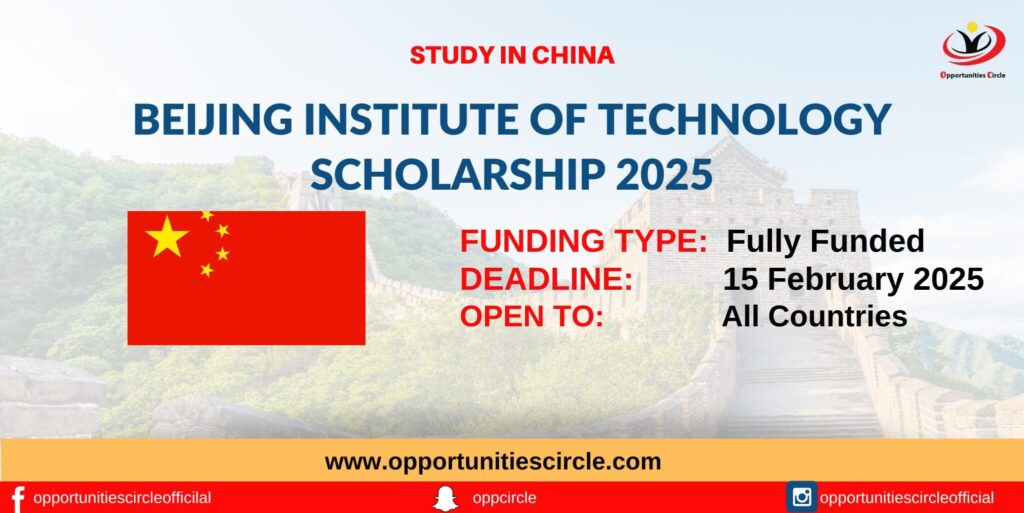I remember it like yesterday, staring at my worn-out laptop screen, a half-written line of code blinking back at me. My dream? To build things, to create solutions, to be a part of the incredible world of technology that seemed to be reshaping everything around us. But there was a giant, shimmering wall between me and that dream: money. University tuition felt like climbing Everest without a rope, and I knew my family couldn’t shoulder that burden alone. This feeling, a mix of burning ambition and crushing doubt, is probably familiar to many of you. It was then, in that quiet moment of despair, that I stumbled upon a phrase that would change everything: "technology scholarships."
Initially, the idea felt too good to be true. Free money? For studying tech? My skeptical mind immediately conjured images of endless paperwork, impossible requirements, and a sea of applicants far more brilliant than me. But a tiny spark of hope flickered. What if? What if there was a way? And so began my deep dive into the fascinating, sometimes frustrating, but ultimately rewarding world of technology scholarships. I wasn’t just looking for financial aid; I was looking for a key to unlock my future, and what I found was a whole arsenal of keys, each one designed to open a different door.
Let me tell you, these scholarships aren’t just handouts; they are investments. Companies, organizations, and even individuals believe in the power of technology to solve problems and drive progress. They see young, eager minds like yours and mine as the architects of tomorrow. They want to ensure that financial barriers don’t stop the next great innovator, the next brilliant coder, the next cybersecurity expert, or the next AI pioneer from reaching their potential. This understanding, that I wasn’t asking for charity but offering my future potential, truly changed my perspective on the application process.
My journey started with a whirlwind of research. I began by casting a wide net, looking for any and every opportunity. I quickly learned that not all scholarships are created equal, and understanding their nuances was half the battle. There are so many types out there, each with its own focus. Some are merit-based, meaning they look at your grades, your academic achievements, and perhaps your performance in tech-related competitions. Others are need-based, designed to help students who genuinely can’t afford tuition. Then there are those tailored for specific tech fields – perhaps a grant for women pursuing computer science, an award for students interested in artificial intelligence, or funding for those passionate about software development or data science. I even found some that championed diversity, encouraging students from underrepresented backgrounds to enter STEM fields. Large tech companies like Google, Microsoft, and IBM often have their own scholarship programs, eager to nurture future talent who might one day join their ranks. Professional organizations, like the Society of Women Engineers (SWE) or the National Society of Black Engineers (NSBE), also offer fantastic opportunities. Don’t forget university-specific scholarships once you’ve been accepted, as many institutions have their own generous pools of funding.
Where did I hunt for these treasures? Everywhere! My university’s financial aid office was a good starting point, as they often have lists of local and national opportunities. Online scholarship databases like Fastweb, Scholarship.com, and Cappex became my daily companions. I signed up for email alerts and spent hours sifting through listings. I even checked the career pages of tech companies I admired, just in case they had programs I hadn’t heard about. It felt like detective work, each clue leading me closer to a potential opportunity. I kept a detailed spreadsheet, noting deadlines, eligibility criteria, and required documents for each one. Trust me, staying organized is your secret weapon.
The application process itself was, to put it mildly, an adventure. It wasn’t just about filling out forms; it was about telling my story. Every scholarship asked for something slightly different, but a few core components were always present: academic transcripts, letters of recommendation, a resume or list of extracurricular activities, and, most importantly, essays.
Ah, the essays. I remember staring at a blank screen for hours, trying to articulate why I deserved this money, why I was passionate about technology. My first few attempts were stiff and generic, full of academic jargon and bland statements. I talked about "the future of innovation" and "solving complex problems," but it didn’t sound like me. It didn’t convey the excitement I felt when I successfully debugged a tricky piece of code, or the fascination I had with how algorithms could bring ideas to life.
I learned, through trial and error, that scholarship committees aren’t just looking for perfect grades; they’re looking for character, for drive, for potential, and for a compelling narrative. They want to know you. So, I started writing about my first encounter with coding, the frustration, the breakthroughs, the projects I poured my heart into, even the silly ones. I wrote about how technology wasn’t just a subject to me, but a way to empower people, to connect the world, to make a tangible difference. I connected my personal experiences to my academic aspirations, showing how my passion wasn’t just theoretical but deeply rooted in my life. I remember an essay where I talked about building a simple website for my grandmother’s small craft business, and how seeing her joy at reaching new customers solidified my desire to pursue web development. That personal touch, that genuine enthusiasm, made all the difference.
Letters of recommendation were another crucial piece of the puzzle. I made sure to ask teachers and mentors who knew me well, not just academically but personally. I picked professors who had seen my dedication in their computer science classes, or supervisors from part-time jobs or volunteer roles where I had demonstrated problem-solving skills and initiative. Crucially, I didn’t just ask them for a letter; I provided them with my resume, a list of my accomplishments, and a brief explanation of why I was applying for that specific scholarship. This made it easier for them to write a strong, tailored letter that highlighted my strengths relevant to the tech field.
And then there were the interviews, some of which were surprisingly nerve-wracking. For one particular scholarship focused on cybersecurity, I had a video interview with a panel of professionals. I practiced answering common questions, researched the organization thoroughly, and even did mock interviews with a friend. When the actual interview came, my heart was pounding, but I remembered to be myself, to speak confidently about my interest in network security, and to ask thoughtful questions at the end. It wasn’t about pretending to know everything; it was about showing my eagerness to learn and my genuine interest in the field.
I won’t lie; there were rejections. Many of them. Each "we regret to inform you" email felt like a punch to the gut. I questioned my abilities, my eligibility, my entire approach. But with each setback, I learned something new. Maybe my essay wasn’t specific enough, maybe I hadn’t highlighted a particular skill, or perhaps I simply wasn’t the right fit for that particular scholarship. I didn’t let the rejections define me. Instead, I used them as fuel, refining my applications, seeking feedback, and doubling down on my efforts. Persistence, I discovered, is just as important as talent.
Then came that email. It arrived on a Tuesday morning, nestled among dozens of junk mails. The subject line was unassuming, but as I opened it, my eyes scanned the first few words: "Congratulations! We are delighted to inform you…" My heart leaped. I read it again, then again, just to be sure. I had won a significant scholarship for my computer science degree, one that would cover a substantial portion of my tuition. The relief, the sheer joy, was indescribable. It wasn’t just about the money; it was validation. It was proof that my hard work had paid off, that my dream wasn’t just a pipe dream. It was the key.
Winning that scholarship didn’t just ease my financial burden; it opened doors I hadn’t even imagined. It connected me to a network of like-minded individuals and mentors. I attended exclusive workshops, met industry leaders, and gained access to resources that enriched my academic experience beyond measure. It also instilled in me a profound sense of responsibility – to excel, to give back, and to use my newfound knowledge to make a difference. I knew I had to maintain a certain GPA, but that wasn’t a chore; it was a natural extension of my commitment to my studies.
So, for those of you out there, with that same burning ambition and looming financial worry, here’s my advice, distilled from my own journey:
First, start early. The earlier you begin your search, the more opportunities you’ll uncover, and the more time you’ll have to craft compelling applications. Deadlines creep up faster than you think.
Second, don’t self-reject. Don’t look at a scholarship’s requirements and immediately think you’re not good enough. If you meet most of the criteria, apply! You never know what might resonate with the selection committee. Your unique perspective might be exactly what they’re looking for.
Third, tailor every application. Resist the urge to send out generic essays. Each scholarship has a specific mission, a specific ideal candidate. Research their values and align your story with what they’re looking for. Show them why you and this particular scholarship are a perfect match.
Fourth, proofread obsessively. A typo or grammatical error can undermine even the most brilliant essay. Read your application aloud, ask a trusted friend or mentor to review it, and use online tools to catch mistakes. Presentation matters.
Fifth, seek help and guidance. Don’t be afraid to ask for advice from teachers, career counselors, or even older students who have successfully navigated the scholarship landscape. Their insights can be invaluable. My university’s writing center helped me immensely with my essays.
Sixth, be persistent. As I said, rejections are part of the process. Learn from them, adjust your strategy, and keep going. Your tenacity will eventually pay off.
Seventh, show your passion, not just your grades. While academics are important, committees want to see your genuine interest in technology. What projects have you worked on? What problems do you dream of solving? What drives your curiosity in coding, cybersecurity, AI, or whatever your tech focus might be? Let your enthusiasm shine through.
Eighth, highlight your character and potential. Beyond academics, what makes you a good candidate? Do you volunteer? Are you a leader in any clubs? Do you have unique experiences that have shaped your perspective? Scholarships often look for well-rounded individuals who will contribute positively to their communities and the tech world.
In a world increasingly driven by technology, the demand for skilled professionals is soaring. Technology scholarships aren’t just about helping individual students; they’re about building a stronger, more diverse, and more innovative global workforce. They ensure that brilliance isn’t confined by circumstance, that talent from all walks of life can access the education and resources needed to thrive in fields like software engineering, data analysis, cloud computing, and more.
So, if you’re dreaming of a future in tech, know that the path, though challenging, is absolutely within reach. The world of technology scholarships is vast and waiting for you to explore it. It might feel like a daunting task at first, but with research, persistence, and a genuine belief in your own potential, you too can find that key. Go forth, explore, apply, and unlock your incredible tech future. It’s a journey worth taking, and trust me, the view from the other side is absolutely breathtaking.



